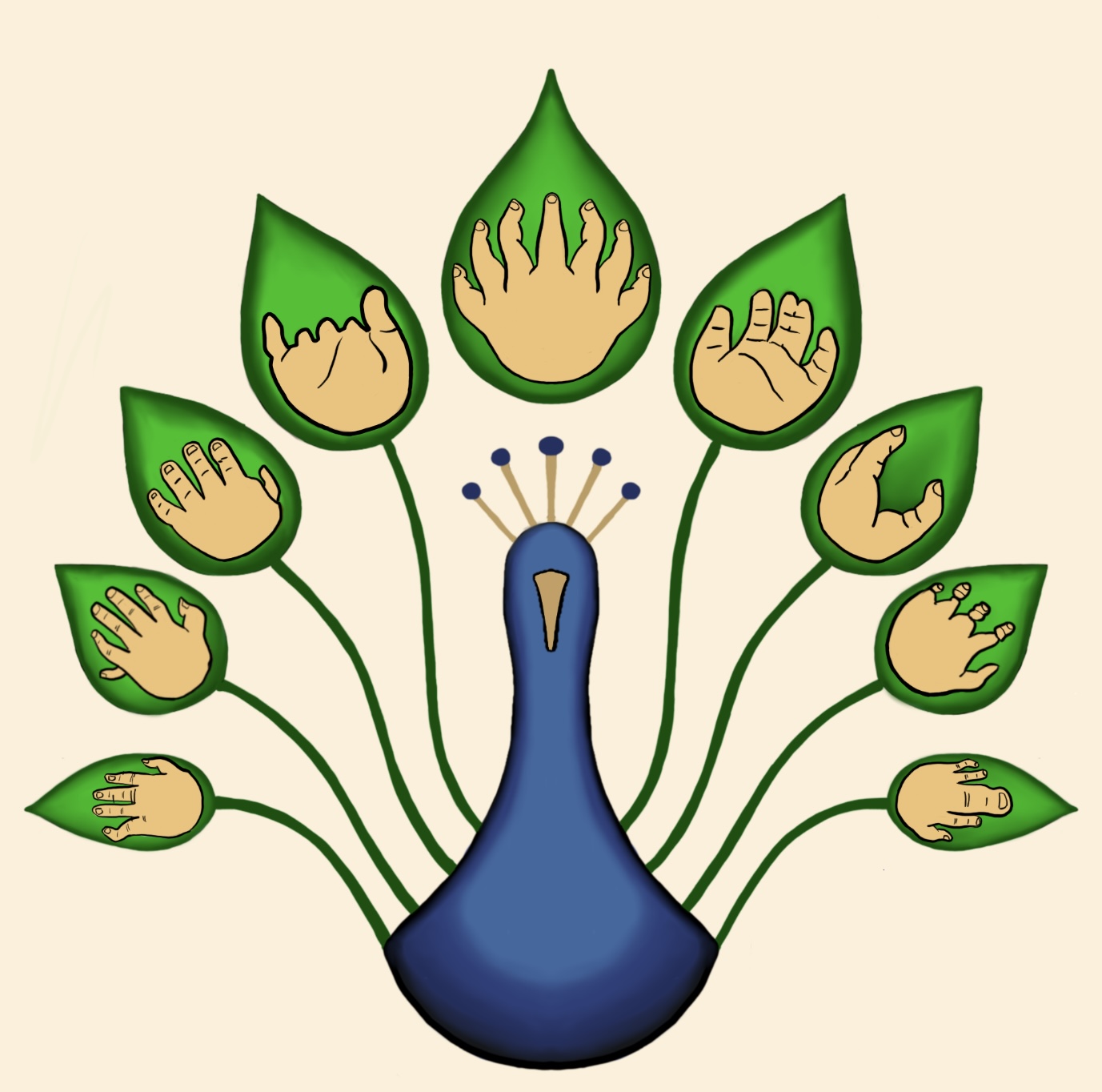
The peacock story line
For the 2026 World Symposium on Congenital Malformations of the Hand and Upper Limb, hosted by Ganga Hospital in India, we have chosen to feature our national bird, the peacock, in our logo. The various Congenital Hand Conditions are shown in the peacock features.
Indian Peacock was designated as the National bird of India in February 1963. Among the contenders were majestic and influential birds such as the Great Indian Bustard, the Sarus crane, the Garuda, and the Swan.
The Great Indian Bustard was recommended by the famous ornithologist Dr Salim Ali. But Mr. Jawaharlal Nehru, the then Prime Minister, chose Peacock as he felt the former would create an unfortunate international incident if the pronunciation went wrong!
The Peacock has a rich cultural significance and is widely distributed throughout India. The National bird must be recognisable to the common man and should not be confused with the bird emblem of any other nation. The Peacock fit the bill.
As we gather in Coimbatore for the 13th World Symposium on Congenital Malformations of the Hand, it’s only fitting that our logo features the magnificent peacock—a symbol of beauty, grace, and renewal. Coimbatore, nestled at the foothills of the Western Ghats, is home to a thriving population of Indian peafowl. Thanks to its open scrublands, and green patches near the outskirts, the city offers a supportive habitat for these national treasures.
In the quiet hours of dawn or dusk, don’t be surprised if a peacock’s call echoes through the trees. Its vibrant presence reminds us of the harmony between urban development and biodiversity—a message that resonates deeply with the spirit of our gathering.
Let the call of the peacock in Coimbatore inspire our shared journey of discovery, collaboration, and progress.
Logo designed by
Dr Monusha Mohan
Dr Sunay Gugri Manjunatha